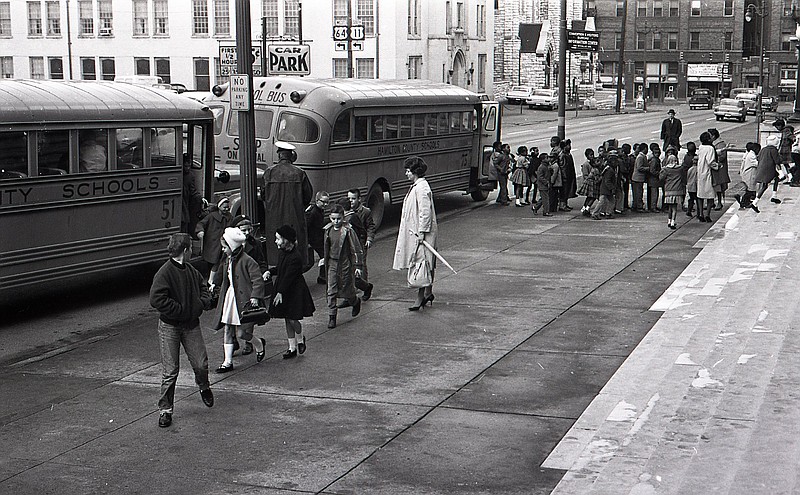The year was 1964, and like generations of school children before them, the youngsters in the accompanying photo were arriving one winter day for an event at the Soldiers and Sailors Memorial Auditorium.
The photo was discovered in the archives of the Chattanooga News-Free Press and is now part of a collection of digital images preserved by ChattanoogaHistory.com.
Built for $700,000 in the early 1920s, the Memorial Auditorium was constructed to honor veterans of World War I. Other buildings in the photo include the Albermarle Building at 324 McCallie Ave. (across from the auditorium), which was built in 1914, and the former First Methodist Church (now the Old Stone Church Tower) down the street.
(READ MORE: Millions in renovations planned for Memorial Auditorium)
Newspaper archives indicate the Albermarle Building was renovated in the late 1990s and contained 31 apartment units at the time. Meanwhile, the old church tower is all that remains of the former Methodist Church, which was built in 1881 and dismantled (except for the tower) in the early 1970s. The stone church is still seen intact in the 1964 photo.
The school buses being unloaded in the photo reflect the racial segregation of public schools in Chattanooga in the mid-1960s.
It was not until the 1970s that Chattanooga's public schools began to desegregate as a result of a 1960 federal court case here, Mapp. vs. Board of Education, that took 26 years to reach its conclusion. In many cities such as Chattanooga, it was years, if not decades, after the landmark 1954 U.S. Supreme Court desegregation case, Brown. vs. Board of Education, that actual racial integration efforts began.
James Mapp, a civil rights leader who ran an insurance business here, was the lone plaintiff in Chattanooga's desegregation suit. He died in 2015 at age 87.
(READ MORE: James Mapp, civil rights leader, dies at age 87)
In 1971, U.S. District Court Judge Frank Wilson, of Chattanooga, established a plan whereby "a racial ratio of not less than 30% but not more than 70% of any race (was mandated) in all but five elementary schools within the city's system" according to The Associated Press archives. The court later issued a plan for desegregating junior high and high schools here.
Read previous articles in this series at ChattanoogaHistory.com or join the "Remember When, Chattanooga?" public group on Facebook.
Contact Mark Kennedy at mkennedy@timesfreepress.com or 423-757-6645.
